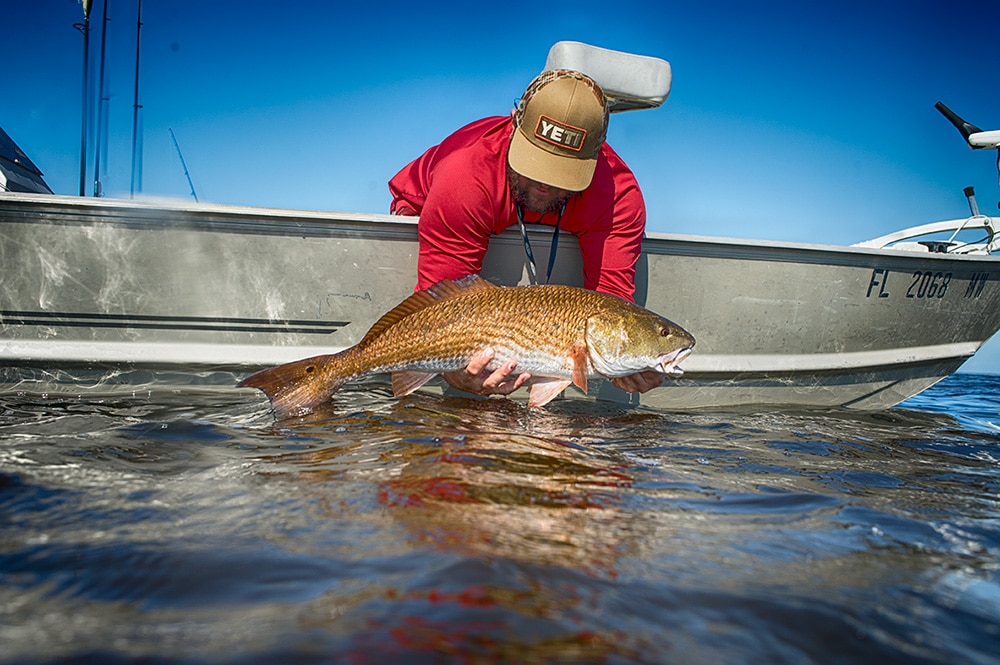
When the rod arched violently in the holder and line screamed from the reel, I was the only one who moved. It seems catching 15 big redfish in as many minutes left my fellow anglers exhausted. Shamed by a few choice words, one took the rod. A few minutes later, the 45-inch fish came boatside, where it was quickly released.
As a marine fisheries biologist, I’ve enjoyed a 30-plus-year professional relationship with redfish from my home base on Georgia’s central coast. But it’s the days I’ve spent with a rod in hand, pursuing them for the thrill of the catch that I treasure most. Capt. Greg Hildreth, who also plies the waters around St. Simons Island and Brunswick, is a kindred spirit who lives and breathes redfish, but doesn’t eat them, preferring to release the fish. His vast knowledge of the species’ habits and habitats makes him one of the most sought-after local fishing guides.
The life cycle of the long-lived redfish can be divided into three categories: juveniles from the previous year’s spawn; sub-adults, the two- to four-year-olds; and adults ranging in age from five to 40-plus years. Each life stage offers a distinctive angling experience.
“Fortunately for me and other redfish fanatics, it’s possible to catch them all in our waters throughout the year, with the fall months being prime time,” Hildreth says.
Juvenile Behavior
Young redfish produced from the annual spawn spend the winter in the protected upper estuary. By the following fall, the now one-year-olds between 14 and 16 inches are found along the shorelines of the lower estuary, schooling at the mouth of creeks, and around oyster reefs, docks, man-made inshore reefs and other structure.
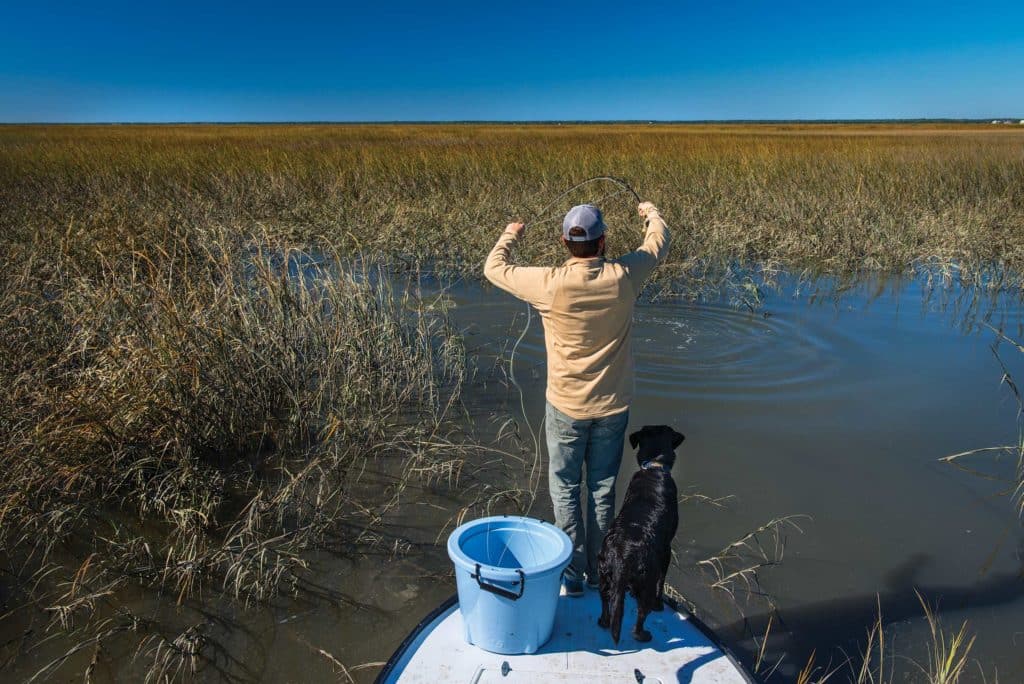
“I tend to find young reds in the same areas from year to year, many times in the exact location where I’ve caught them before. Once I’m in a historically productive area, I’ll make exploratory casts until I locate the fish. Lower stages of tides—last of the ebb and first of the flood—are best, as structure is exposed and fish are concentrated,” Hildreth explains.
Live shrimp, mud minnows and scented soft plastics fished—with medium-action tackle—tight to structure on or near the bottom draw strikes. Anglers often use slip floats because they allow for an infinite range of depth adjustments, ensuring baits stay in the strike zone. A popping cork fitted with a depth-specific length of leader also produces.
Hildreth prefers a thin-wire circle hook when using natural baits for the yearlings, which he knows to be aggressive and subject to swallowing a conventional hook. “They might be babies by age but not attitude, and it’s common to catch several dozen from a single spot when the bite is on,” he says. “Thankfully, we have harvest regulations to prevent these youngsters from being fished out, although I do wish the creel limit was fewer than five fish.”
Skinny-Water Excitement
By their second birthday, most redfish have grown to more than 20 inches, and their habits have changed. They begin to join their older cousins in schools frequently found in shallow water, offering one of coastal Georgia’s few consistent sight-fishing opportunities. Hildreth pursues them from his poling skiff when the vast Spartina marshes are flooded by higher-than-average tides.
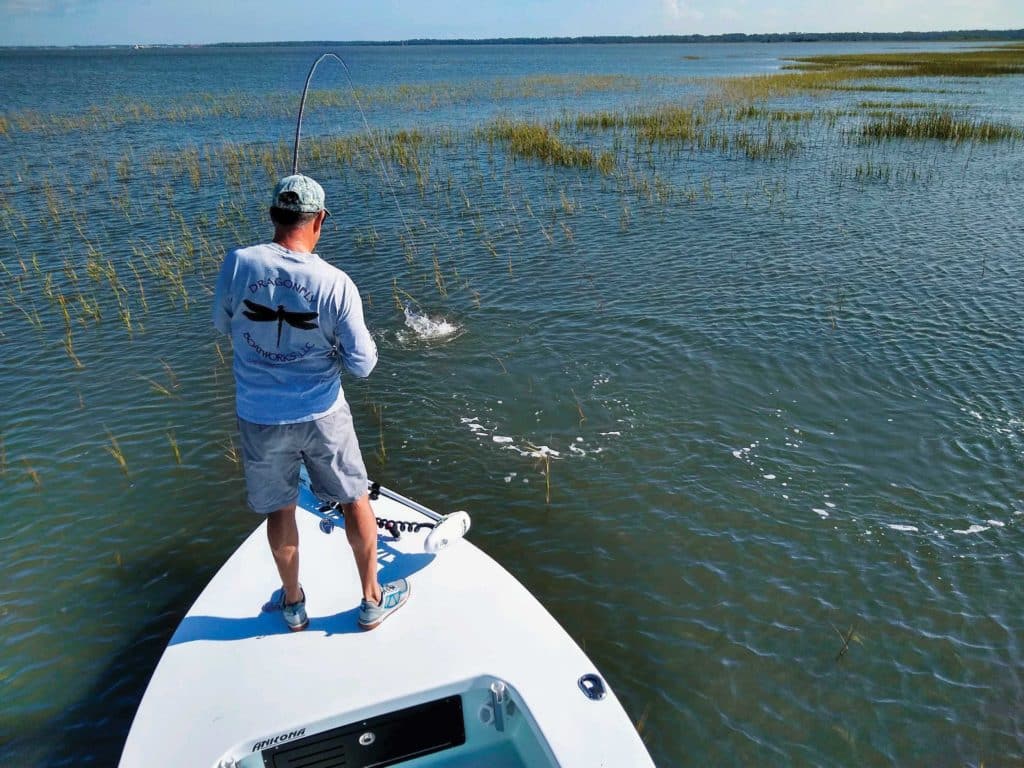
“Each month, during the new- and full-moon phases, we’ll have a few days when our tides push more water onto the marsh, letting redfish access usually inaccessible feeding territory,” he says. “In our area of the central Georgia coast, I’m looking for flood tides with a predicted amplitude of 7.5 feet, anytime from April through October. It’s a given that the fish will be in the marsh, and it’s just a matter of finding them.”
The poling platform on Hildreth’s skiff gives him an advantage when looking for the exposed blue-edged tails of redfish nosing down in search of prey. He scans the marsh surface, especially openings in the grass that hold the highest concentration of fiddler-crab burrows and, subsequently, foraging reds.
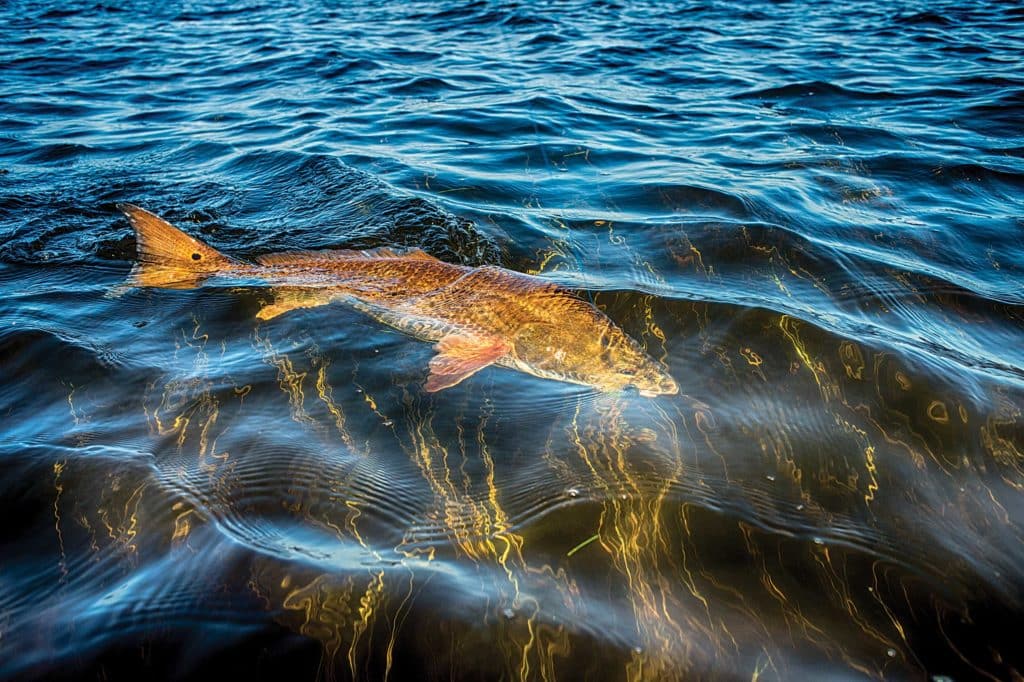
While visual cues are important, so is listening. “We often hear the reds before we see them. A 30-incher chasing a fiddler crab in 12 inches of water makes quite a commotion,” he says.
Scented soft baits, such as a Berkley Gulp Shrimp or Peeler Crab in a natural color, rigged weedless on a 2/0 wide-gap hook, and connected to the main line with 2 feet of monofilament leader, create the preferred terminal rig. A 1/8-ounce pinch weight increases casting distance and accuracy.
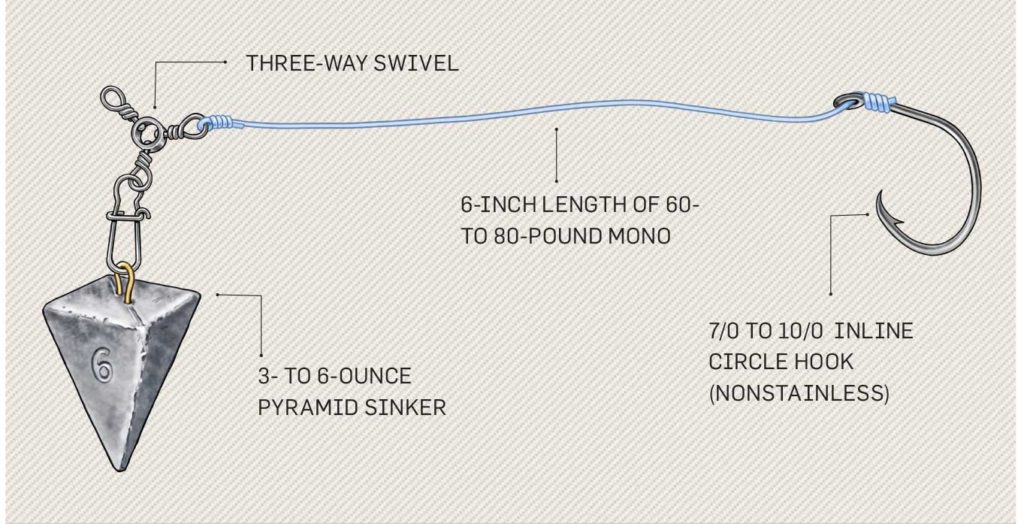
Once a fish takes the bait, set the hook and raise the rod tip to keep as much line out of the water as possible, avoiding tangles with marsh grass and those one-that-got-away sob stories.
The average flooded-marsh fish measures 25 inches in length, though individuals over 30 inches can be found. Most of these reds top Georgia’s 14- to 23-inch slot-size limit, so they must be released.
Rip-Roaring Reds
Once adult redfish have completed the late-summer/early-fall spawning season, they’re ravenous and need to replenish their depleted energy reserves. From September through mid-November, they feed at the mouths of the larger tidal rivers, in the crashing surf near inlets, and on nearshore shoals and current rips.
While Hildreth will run just about anywhere to find a big redfish, he specializes in catching adults from the rips formed by strong tidal flows over submerged, nearshore sandbars.
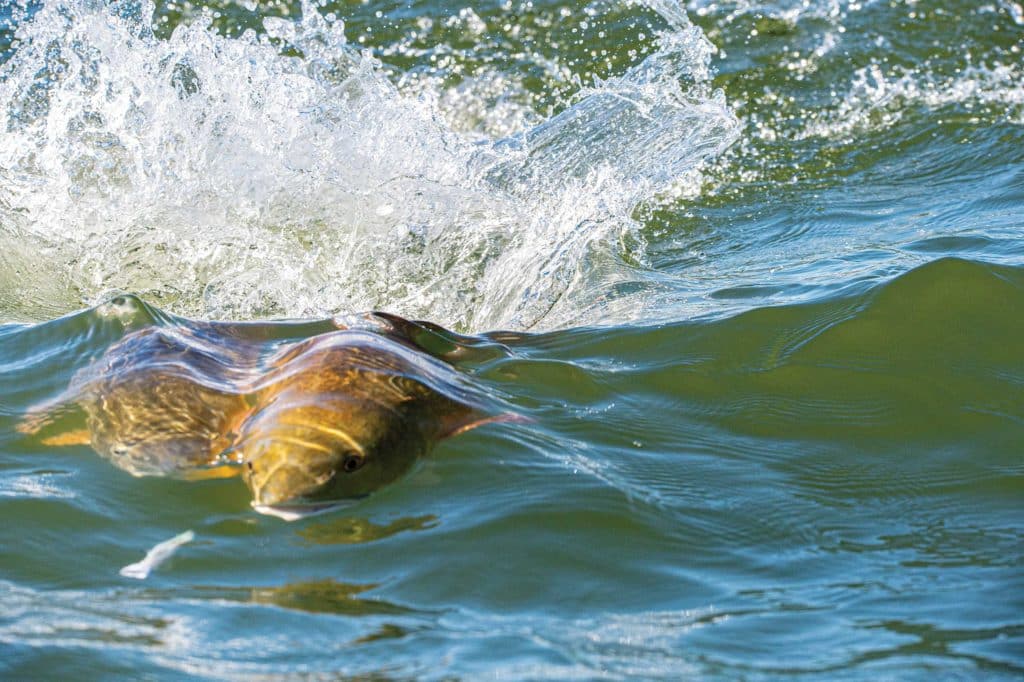
“Big redfish stack up on these rips to feed on baitfish, crabs, and even shrimp caught up in the turbulence,” he says. “As I approach an area, I’m looking for the characteristic boundary between smooth water and rough water that marks an abrupt depth change. I’m also looking for bait. Jumping mullet and flipping menhaden are telltale signs that reds are probably in the area. If I’m seeing marks on my depth finder, all the better.”
Hildreth motors to a location up-current of the rip, shuts down the engine, and drifts back to anchor where baits can be cast into and just down-current of the rip. Sometimes, he must reposition to find the sweet spot along the rip, or to adjust as the rip itself changes with fluctuations in tidal current and wind. However, once you find that right spot, it’s game on.
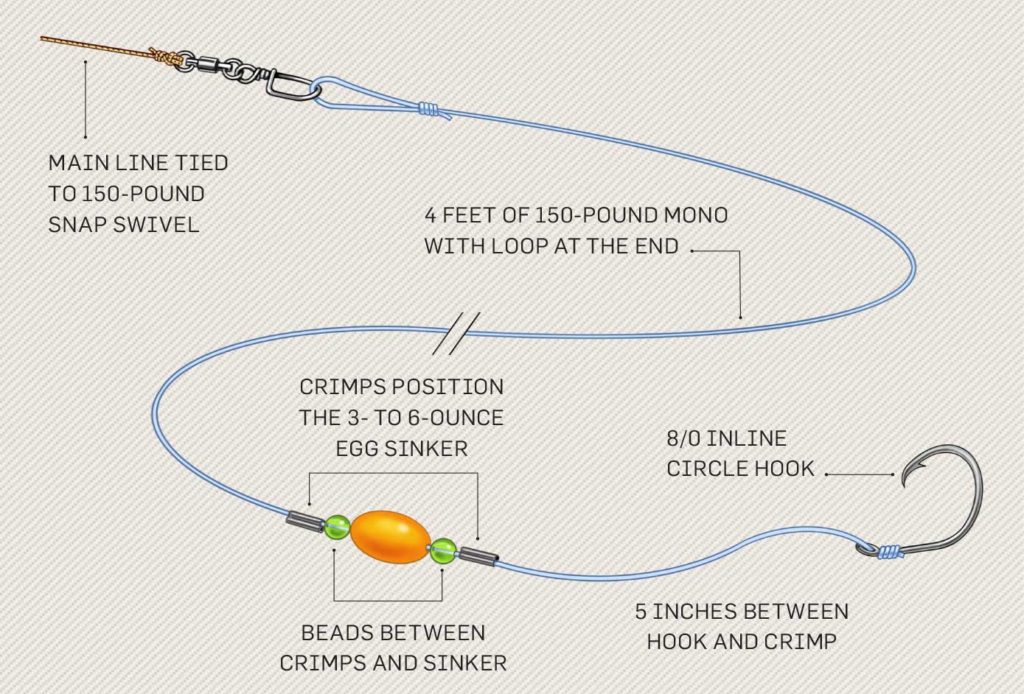
“My preferred bait is a live, hand-size menhaden fished on the bottom, but I’m happy to use cut mullet as well,” he says. “I also carry some light tackle rigged to catch whiting, which serves both as cut bait and as table fare for customers looking for a fresh fish dinner. Of course, I never leave the dock without some frozen bait also, just in case.”
A vocal advocate for red drum conservation, Hildreth uses a terminal rig specifically designed to minimize the chances of deep-hooking the aggressive, large bull reds he likes to target. He places a weight on the leader, about 5 inches above a circle hook. Even hungry fish hesitate to swallow the weight, allowing the hook to catch in the lip or jaw hinge, as intended.
Read Next: 12 Best Redfish Fishing Spots
“I frequently have 20-fish days, and my best is 59 big reds on a single trip,” he says. “I use circle hooks and heavy tackle to reduce the fight time. Once we’ve had a few photos, I release the fish without taking them out of the water. These redfish are the ones producing the next generation, so it’s important that we do everything we can to ensure they are released in good condition.”
A short-leader circle-hook rig effectively reduces deep hooking and improves post-release survival in adult reds. Hildreth uses a variation of this rig (with a heavier and longer leader) designed to be more durable and suitable for his style of fishing. Plus, that leader makes it possible to land a tarpon or large shark, which are sometimes incidental catches when targeting bull reds.









